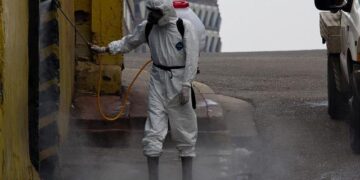As the Republican Party grapples with internal divisions and mounting external pressures, the rise of so-called “rage” politics has emerged as the latest obstacle for GOP leaders to overcome. Conservative voices like former Congressman Dave Brat argue that while these intense, emotionally charged approaches present challenges, past political battles have ultimately fortified the party’s resolve and cohesion. This dynamic signals a pivotal moment for Republicans as they navigate the complexities of energizing their base without fracturing their broader coalition.
Rage Politics Emerges as a New Challenge Testing GOP Unity and Strategy
GOP leaders are confronting an unprecedented internal test as the rise of “rage politics” challenges the party’s traditional approach to campaigning and governance. This new political paradigm, marked by heightened emotional appeals and confrontational rhetoric, threatens to fracture the delicate balance within the Republican base. Conservative strategist and former Congressman Dave Brat points out that while the anger-driven dynamic can energize segments of voters, it also risks alienating moderate supporters and complicating efforts to present a unified front in the approaching election cycles.
Drawing on the lessons from past ideological battles, Brat asserts that the GOP has earned resilience through repeated trials that sharpened its message and political fortitude. The party’s ability to navigate thorny internal debates-from the Tea Party insurgency to recent policy disagreements-has forged a more adaptable and determined conservative movement. Yet, with rage politics introducing fresh volatility, leaders must carefully calibrate their messaging to avoid deepening divisions while still harnessing the energy of fervent activists. Below is a quick comparison of key moments where conservatives successfully turned challenges into strengths:
| Era | Challenge | Outcome |
|---|---|---|
| Tea Party Wave (2010) | Grassroots demand for fiscal conservatism | Expanded GOP base, influenced policy |
| 2016 Primary Battles | Populist surge vs. establishment | Unified behind outsider candidate |
| Midterm Frenzy (2018) | Polarized electorate, energized opposition | Recalibrated messaging for swing districts |
| Current Rage Politics | Emotional extremism vs. coalition-building | Ongoing efforts to balance energy and unity |
- Maintaining coalition cohesion amid divergent priorities
- Strategic messaging to engage both passionate activists and moderate voters
- Learning from history to avoid pitfalls of previous intra-party conflicts
Historical Conservative Battles Offer Strategic Lessons for Overcoming Internal Divisions
Throughout the GOP’s history, moments of intense internal strife have repeatedly tested the resilience of conservative movements. From the ideological rifts of the Reagan era to the Tea Party’s insurgent wave, these experiences served as crucibles that forged stronger, more unified factions. Rather than succumbing to division, the party harnessed these challenges to refine messaging, clarify policy priorities, and build coalition-based strategies aimed at consolidating support across diverse constituencies. Strategic flexibility and a willingness to engage in robust debates have historically been key in transforming factional disputes into catalysts for growth.
By examining past conservative battles, one can identify several strategic takeaways necessary for overcoming current “rage” politics that threaten party cohesion:
- Clear Communication: Prior efforts emphasize purposeful messaging to bridge ideological divides.
- Coalition Building: Combining grassroots activism with institutional support to create durable alliances.
- Policy Adaptability: Responsiveness to voter concerns without abandoning core principles.
| Era | Key Challenge | Strategic Lesson |
|---|---|---|
| Reagan 1980s | Fragmented conservative factions | Unified messaging on shared values |
| Tea Party 2010s | Populist insurgency vs. establishment | Grassroots coalition-building |
| Current GOP | “Rage” politics and polarization | Balanced policy adaptability |
Building a Resilient GOP Coalition Requires Embracing Grassroots Energy and Policy Clarity
At the core of fortifying the Republican coalition lies a renewed commitment to grassroots activism. Energized local supporters drive campaigns, influence primaries, and hold elected officials accountable, creating a dynamic feedback loop that shapes the party’s direction. This bottom-up momentum counters the pitfalls of elite-driven politics, ensuring policies reflect the concerns of everyday Americans rather than distant party strategists. Without nurturing this base, the GOP risks fracturing under internal discord and external pressures that exploit divisions.
Equally vital is the pursuit of policy clarity. In an era where “rage” politics dominates headlines, clear, consistent messaging on issues like economics, immigration, and national security offers voters a concrete reason to unite behind the party’s vision. Ambiguity breeds confusion and weakens collective resolve, while decisiveness strengthens conservative identity and legislative effectiveness.
| Key Element | Impact on GOP Resilience |
|---|---|
| Grassroots Engagement | Bolsters authentic voter connection |
| Policy Clarity | Strengthens voter confidence |
| Consistent Messaging | Reduces factional infighting |
- Mobilized local activists amplify party priorities on the ground.
- Clear platforms enable effective communication during debates and elections.
- Unified stances mitigate the divisiveness fueled by “rage” politics.
Concluding Remarks
As the GOP navigates the turbulent waters of ‘rage’ politics, the party faces yet another test of its resilience and cohesion. Reflecting on past internal struggles and ideological battles, conservatives have demonstrated an enduring ability to adapt and emerge stronger. Whether this legacy of perseverance will carry the party through its current divisions remains a pivotal question in the lead-up to future elections. For now, the GOP’s challenge lies in balancing fiery rhetoric with strategic unity-an obstacle that, historically, Dave Brat and others suggest the party is prepared to meet head-on.































